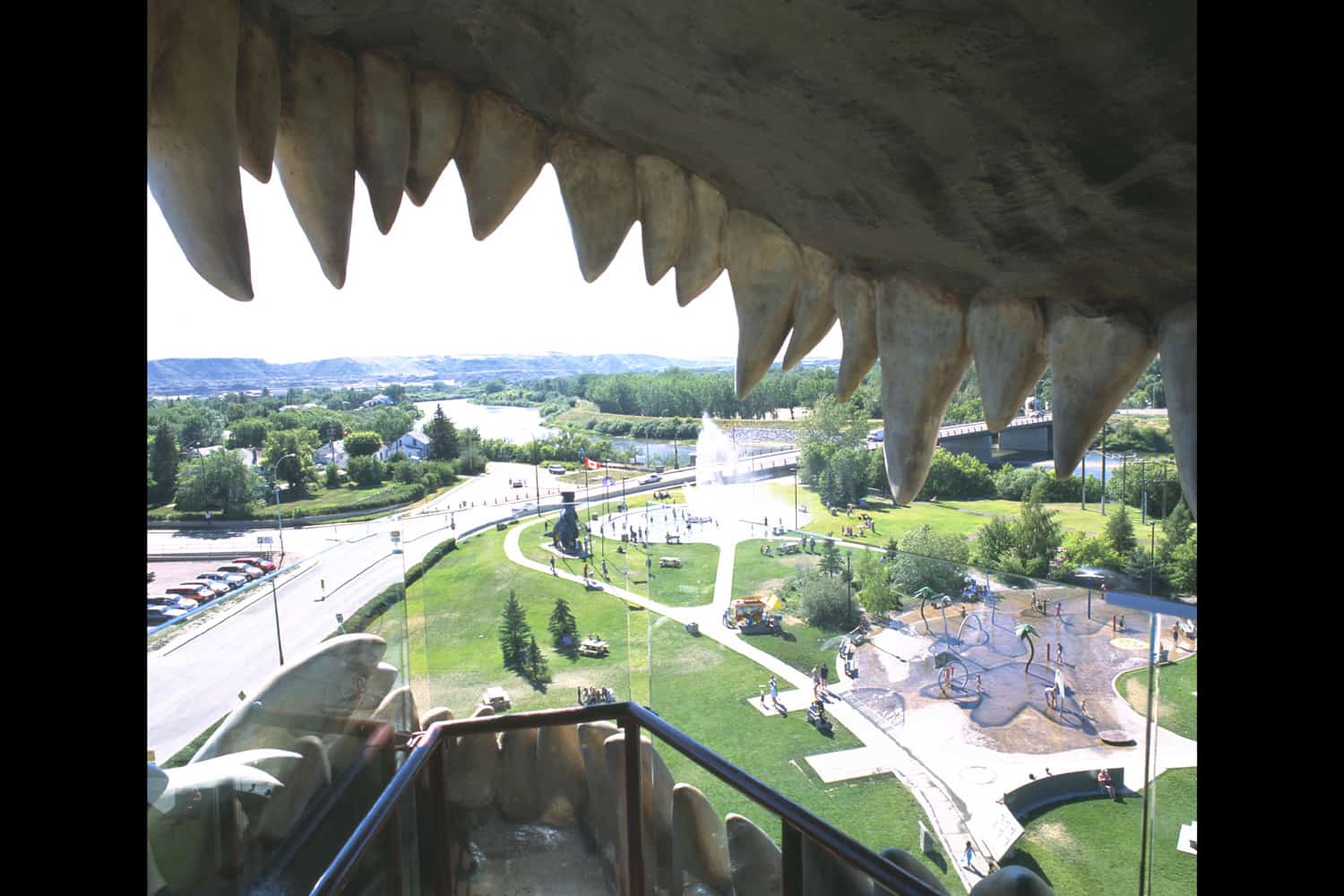At first glance, the Canadian Badlands in southern Alberta seem a bald expanse ravaged by harsh winds. But there are surprises in this landscape. Ranges of hills appear in isolated locations, preserving the topography of the region before it was scoured by glaciers; river valleys, reveal fantastically-shaped badlands and expose rich beds of dinosaur bones; and there are plants and animals here that are not found anywhere else in the world.
Badlands
 Travel Alberta
Travel AlbertaHorsethief Canyon and Horseshow Canyon in the Drumheller Valley offer a panoramic view of the badlands; Dinosaur Provincial Park features Canada’s largest tract of badlands.
There are also spectacular badlands and hoodoos in two provincial parks: Dry Island Buffalo Jump and Writing-on-Stone. Venture off the beaten path and you’ll come across pockets of badlands near southeast towns like Steveville and Jenner.
Prairies
The predominant landscape of the Canadian Badlands is the vast prairie – endless grasslands where immense herds of bison roamed. Travel Alberta
Travel AlbertaProvincial Parks
The showpiece of the region is Dinosaur Provincial Park, a UNESCO World Heritage Site renowned for its extensive badlands and dinosaur fossils. But other provincial parks also boast spectacular landscapes and sensitive habitats.A steep cliff once used by Aboriginal hunters and a variety of badlands formations are the highlight at Dry Island Buffalo Jump Provincial Park.
 Travel Alberta
Travel AlbertaIn Writing-on-Stone Provincial Park, the Milk River twists through sandstone walls adorned with ancient Aboriginal carvings, while Cypress Hills Interprovincial Park looms 600 metres above the surrounding prairie.
Kinbrook Island Provincial Park at Lake Newell is a well-known spot for birdwatching – you can see pelicans, cormorants and migrating waterfowl.
Badlands Bonebeds
The Canadian Badlands harbours some of the richest dinosaur fossil deposits in the world. In fact, fossils from more than 35 species of dinosaurs – duck-billed hadrosaurs, horned ceratopsians, and carnivores like Gorgosaurus and Daspletosaurus – have been found in Dinosaur Provincial Park and are on display in the park’s visitor centre and the world-famous Royal Tyrrell Museum near Drumheller.The Royal Tyrrell, Canada’s only museum devoted exclusively to palaeontology – boasts one the world’s largest collections of dinosaur skeletons, along with dynamic, interactive displays and interpretive programs that make the prehistoric era come alive.
 Travel Alberta
Travel AlbertaIn the nearby town of Drumheller, a larger-than-life replica of a Tyrannosaurus offers a different view of dinosaurs. Climb 106 stairs into the mouth of the World’s Largest Dinosaur and enjoy a tooth-framed view of the Drumheller Valley.
 Travel Alberta
Travel Alberta

